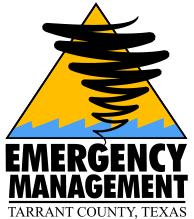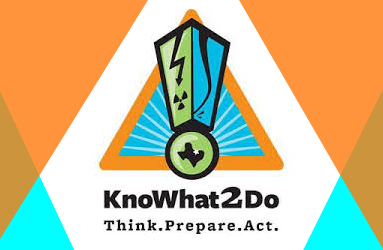Emergency Management
Emergency Management

The Tarrant County Office of Emergency Management (TCOEM) aims to help communities and jurisdictions with preparing for, mitigating against, responding to and recovering from natural and human-caused disasters in Tarrant County. The TCOEM staff maintains regular contact with local municipalities, private agencies and the unincorporated areas of Tarrant County to coordinate planning efforts related to emergency management, coordination, collaboration and communication with stakeholders. Additionally, the TCOEM seeks out grant funds for Homeland Security and emergency planning programs and equipment for local government, police, fire, EMS, emergency management and all other agencies and organizations who are responsible for safety and support of the community.
For more information contact:
Office of Emergency Management
Tarrant County Administrator’s Office
Office of Emergency Management
100 E Weatherford St, Ste 404
Fort Worth, Texas 76196-0609
David McCurdy
Emergency Management Coordinator
Office: 817-884-1804
dmmccurdy@tarrantcountytx.gov
William Wessel
Assistant Emergency Management Coordinator
Office: 817-884-2906
wtwessel@tarrantcountytx.gov
Esmeralda Sanchez
Assistant Emergency Management Coordinator
Office: 817-884-2850
esanchez3@tarrantcountytx.gov
Hazard Mitigation Action Plan
(this document is very large and takes time to load)

The Four Phases of Emergency Management
Mitigation
Preventing future emergencies or minimizing their effects
- Includes any activities that prevent an emergency, reduce the chance of an emergency happening or reduce the damaging effects of unavoidable emergencies.
- Buying flood and fire insurance for your home is a mitigation activity.
- Mitigation activities take place before and after emergencies.
Preparedness
Preparing to handle an emergency
- Includes plans or preparations made to save lives and to help response and rescue operations.
- Evacuation plans and stocking food and water are both examples of preparedness.
- Preparedness activities take place before an emergency occurs.
Response
Responding safely to an emergency
- Includes actions taken to save lives and prevent further property damage in an emergency situation. Response is putting your preparedness plans into action.
- Seeking shelter from a tornado or turning off gas valves in an earthquake are both response activities.
- Response activities take place during an emergency.
Recovery
Recovering from an emergency
- Includes actions taken to return to a normal or an even safer situation following an emergency.
- Recovery includes getting financial assistance to help pay for the repairs.
- Recovery activities take place after an emergency.
FEMA 2001


(enter your city and state in the "local forecast" box on the left side of the page and hit the "Go" button)

Accessibility Notice: Due to the complexity of source of the preceding documents, some of these documents are scanned images. If you require assistance in accessing the information, please contact 817-884-1804.


 TARRANT COUNTY, TX
TARRANT COUNTY, TX

 Administration
Administration



